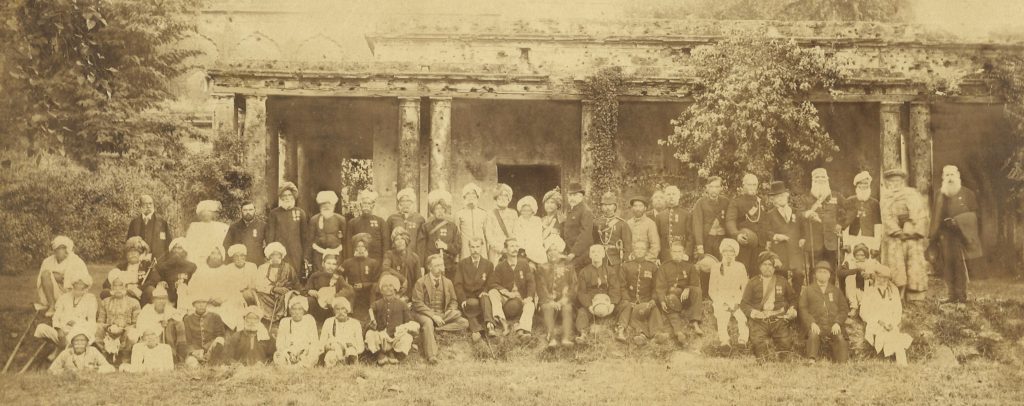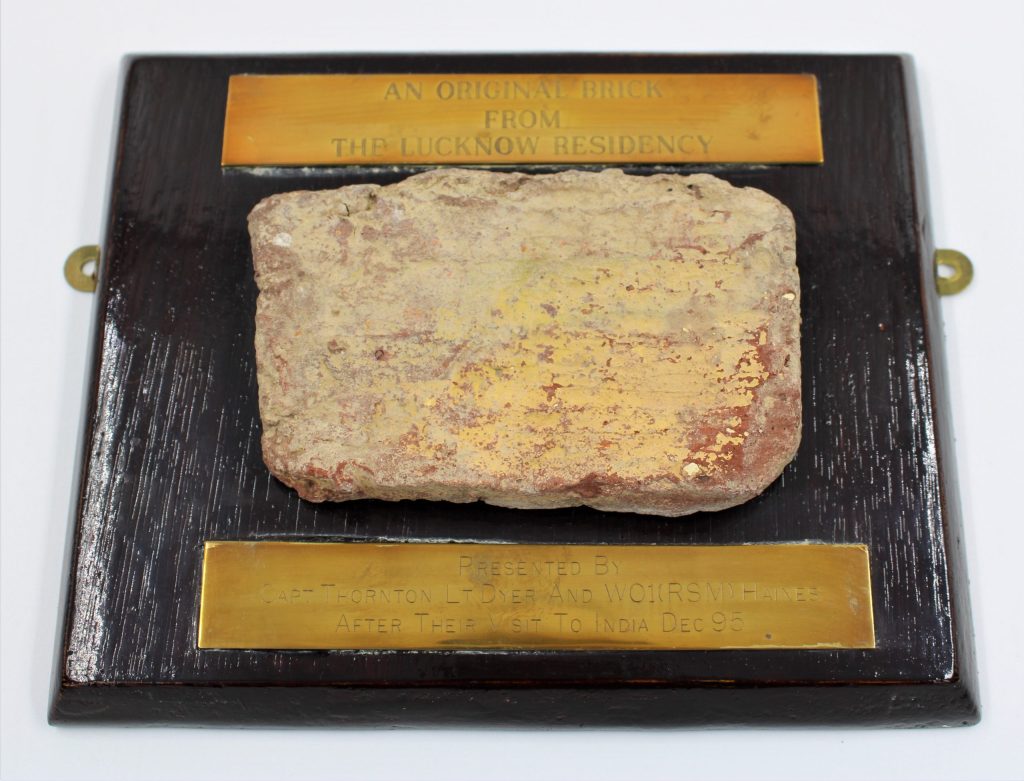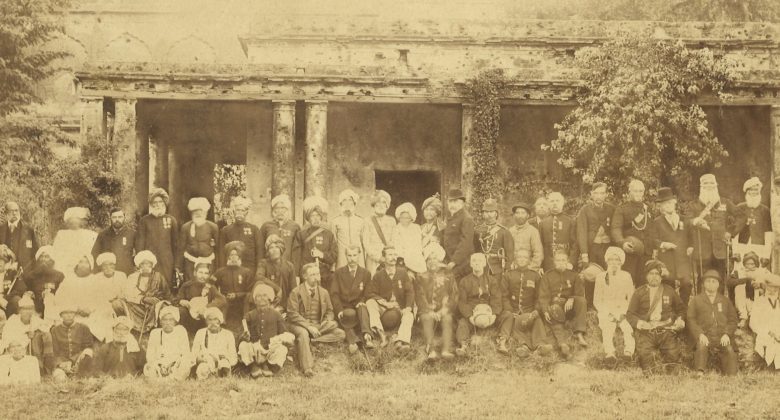This week is the anniversary of the Final Relief of Lucknow in 1857, the relief followed a period of rebellion in which Indian soldiers and civilians challenged British rule in northern India.
Rebellion
In 1857, large groups of sepoys rebelled against the British troops in India fuelled by a growing discontent with British Rule. Supported by Indian civilians and nobles across northern India, the sepoys set about besieging and reclaiming various cities from the British.
With widespread mutinies underway, Commander Lawrence ordered all women and children of Lucknow to take cover in the Residency, there was around 3,000 British supporters held under siege at the Residency for 148 days in the city’s fortress.

The Last Gathering of the Defenders of Lucknow, 1885
The Residency
The buildings surrounding the Residency were occupied by rebel snipers and artillery, keeping the troops and civilian’s ‘hostage’ until back up forces made attempts to relieve them.
The Residency was a group of central administrative buildings that were originally built between 1775 and 1800 to house the British representative in the court of the Indian rulers (the Nawabs).

This brick was part of the British defences during the siege of Lucknow. It was taken from the Residency buildings in 1995 by two officers who turned it into a commemorative plaque.
Relief
The first relief attempt to free them occurred on September 25 when a force under the command of Major General Sir Henry Havelock fought its way across rebel-held territory to Lucknow. However, by the time he reached the Residency, Havelock had lost so many troops that he considered it too risky to attempt to evacuate the civilians. The relief force joined the garrison, improved the defences, and waited for a second relief.
On November 16th, 1857, Sir Colin Campbell and a larger force of 4,500 men advanced on Lucknow. They flanked the rebels from the east and were supported by attacks from those trapped within Lucknow, reaching the Residency on November 19 and began evacuations.
On 19 November the men, women, and children moved out of the Residency. They were shielded by canvas screens and accompanied by British and Indian troops. Meanwhile, Adjutant General Havelock distracted the rebels with an artillery bombardment, trying to convince them that an attack was imminent.
61 days after the first relief, the Residency was fully evacuated. The siege of Lucknow had ended.
The area of the museum dedicated to the conflict in 1857 has recently been redisplayed and holds a fascinating collection of objects relating to the period in India during 1857.

